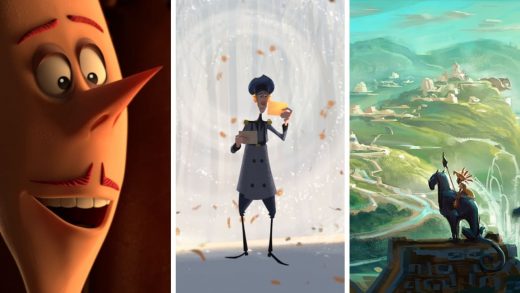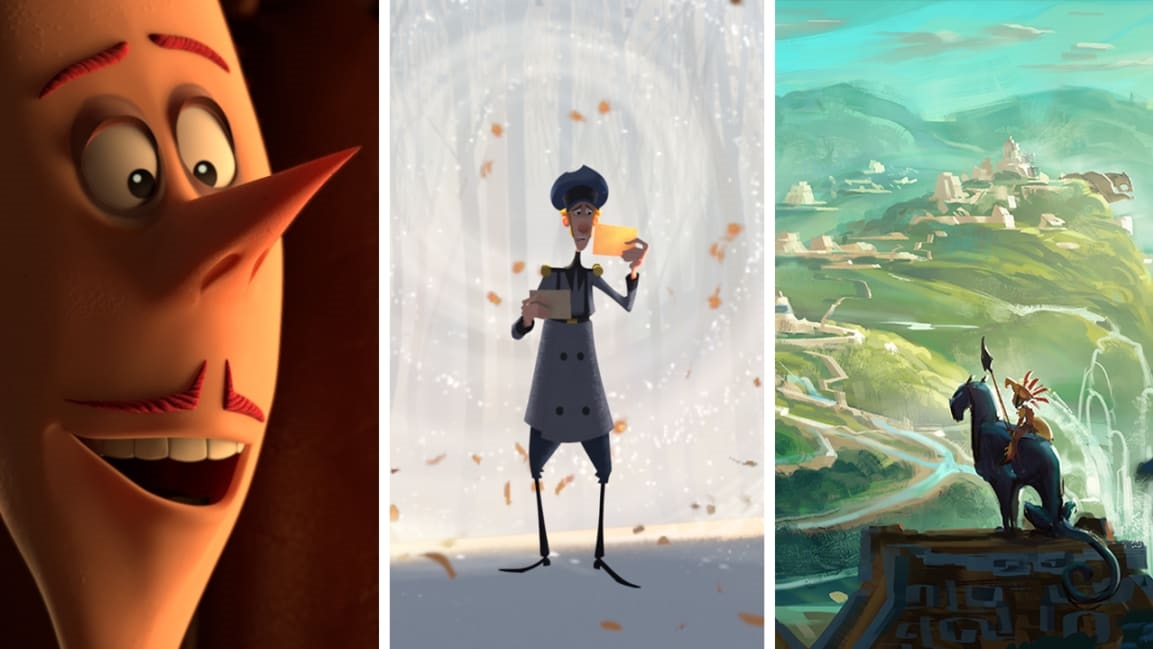How Netflix plans on owning your kids’ screen time
Netflix’s animation studio exudes none of the world-dominating mojo of the company’s Hollywood headquarters, the geometrically shaped Death Star located just a few blocks away on Sunset Boulevard. There is no towering glass case stuffed with Emmy and Oscar statuettes glinting under the lights of the front lobby. No row of officious-looking assistant types asking for your ID to scan you in. No series of sleek snack stations proffering every variety of bar, nut, and kombucha beverage currently available on the planet. (Though both outposts do stock their restrooms with pre-toothpasted toothbrushes.)
The animation building, a refurbished soundstage that Netflix has inhabited for just a year, feels like a scrappy warren where dressed-down animators, directors, and writers are holed up in cubicles and offices wallpapered in storyboards and drawings. Among the building’s 200 residents are Elizabeth Ito, the Adventure Time director who’s making a dreamy-looking show about an urban ghost; Max Keane, the son of legendary Disney animator Glen Keane (he helped draw The Little Mermaid, Beauty and the Beast, and Aladdin), whose series Trash Truck is about a 6-year-old’s friendship with his toy dump truck (Keane père is producing); and Jorge Gutiérrez, who’s working on a four-and-a-half-hour epic, Maya and the Three, which is a Moana-esque story with an ass-kicking female heroine that’s inspired by Mesoamerican mythology.
There’s no point trying to decipher a theme among the dozen animated projects currently in the works at Netflix: There is none. That’s exactly the point. Unlike other animation powerhouses like Disney, Pixar and Illumination, Netflix isn’t trying to define its kids’ fare with a certain look, tone, or sensibility. (In addition to creating its own kids’ originals, Netflix still acquires projects and has partnership deals with such companies as DreamWorks Animation and Nickelodeon.)
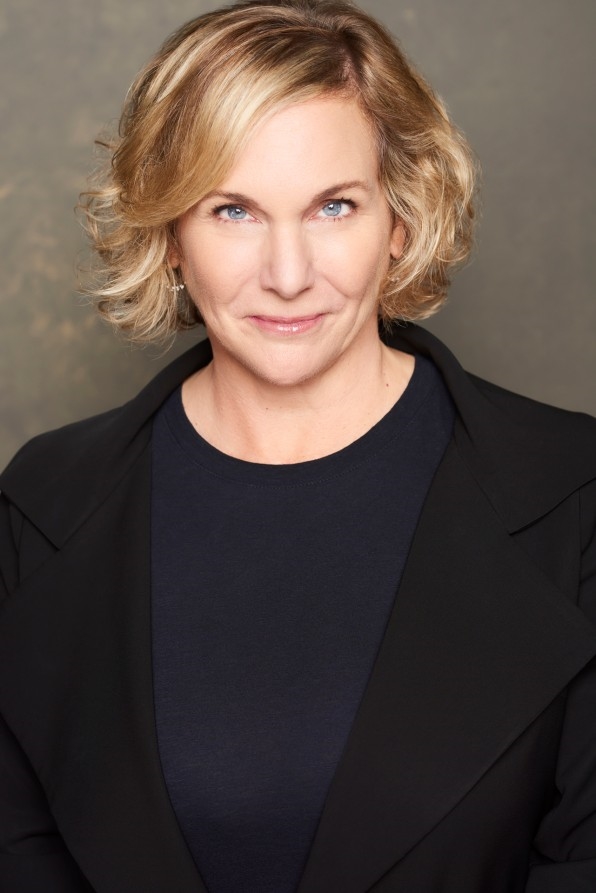
[Photo: courtesy of Netflix]
“It’s something we’re consciously not doing,” says Melissa Cobb, Netflix’s vice president of kids and family content. “I thought that same question when I came here. I was like, We need a brand! Because I’d worked at Fox and Disney and DreamWorks. But I realized after coming here that it’s really important not to have a brand, and not to sort of box our content into a corner, because we’re serving such a wide audience.”
Indeed, that audience is currently 139 million subscribers strong. With the majority of those viewers residing outside the United States, Netflix is doubling down on both locally produced content as well as fare that has a good chance of traveling between territories. Kids’ programming, with its emphasis on visual storytelling, often does just that. One of Netflix’s biggest kids’ hits to date, Boss Baby, a series based on the DreamWorks Animation film, performed well across the globe, Cobb says.
Kids are also some of Netflix’s biggest users, as anyone with a child in the house knows, and they are a huge driver for any streaming service, period. Sixty percent of Netflix’s members watch kids’ programming, and in the last month, 50 million unique Netflix profiles streamed kids’ titles. This explains why Netflix is investing so heavily in the space. According to the venture capital firm Loup Ventures, Netflix is expected to spend $1.1 billion, or 11% of its overall original content budget this year, on animation. The hope is to churn out more globally appealing series like Boss Baby, as well as to ward off growing competition from the likes of Disney, which, having ended its licensing deal with Netflix at the end of last year, is about to launch its own family entertainment streaming service, Disney+. Hulu and Amazon are also aggressively upping their spends on kids’ content.
But while companies like Disney are using streaming to lean ever deeper into its portfolio of brands–from Pixar to Walt Disney Animation to Marvel–Netflix sees kids’ shows and movies as a way to further the company’s overall mission, which is to be everything to every person on earth. That means investing in not only TV shows, but also artistically ambitious feature films like the upcoming Klaus from Despicable Me co-creator Sergio Pablos, and Over the Moon, which Glen Keane is directing, and Netflix and Pearl Studios are producing.
“We want to have the favorite show of everybody in the household,” Cobb says. “So whether it’s a preschool child or an 8-year-old girl or a 13-year-old boy or parents that want to hang out with their kids and watch something together–we want to make sure that we have all of that content available.”
So how do you do that?
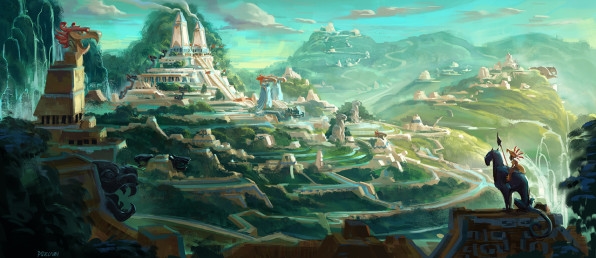
Seek out creators with wildly different styles and viewpoints
One way that Netflix is distinguishing itself is by hiring a wide range of creators and letting them do their thing. In keeping with the creative latitude that TV and filmmakers are given on the original programming side, people like Ito and Gutierrez are working on passion projects that in all likelihood wouldn’t have been made anywhere else. Ito’s still unnamed series is quiet and painterly, based on images she displayed in her office. Not exactly Trolls 2. As for Maya and the Three, the series has the lush visuals of feature film; it’s hard to imagine what other company would invest so substantially–no budget has been announced, but it’s clearly not being made on the cheap–in what is ultimately a kids’ TV show steeped in ancient mythology.
Cobb says this is intentional. Netflix wants to attract creators “who have a really strong point of view about what they’re going to do, so that we know that they can execute it well.” The idea is no to Netflix-ify projects (the way, say, Disney or DreamWorks Animation bend ideas to their house styles), but to let creators have their own voice as a means of creating a catalog of content that is exceptionally broad and diverse.
The names Netflix has attracted so far are a combination of established people like Keane and James Baxter, a fabled Disney and DWA alum who oversees character animation at Netflix, as well as up-and-comers like Ito and Megan Nicole Dong, who did animation on How to Train Your Dragon at DWA and is now working on her own series at Netflix.
Netflix’s commitment to freedom sometimes means going in a completely different direction. Pinky Malinky creators Rikke Asbjorn and Chris Garbutt are working on an interactive show about a cat and dog who wake up to find all humans have disappeared. As they search for their human friends, viewers can choose to follow either the cat’s or the dog’s journey.
“Everything we’ve done in the past, like Pinky, has been very character-driven,” says Garbutt. “We’ve never worked in interactive before. So it’s like, how do we keep the characters who they are, but allow the audience to really be engaged and feel like all of their choices matter?”
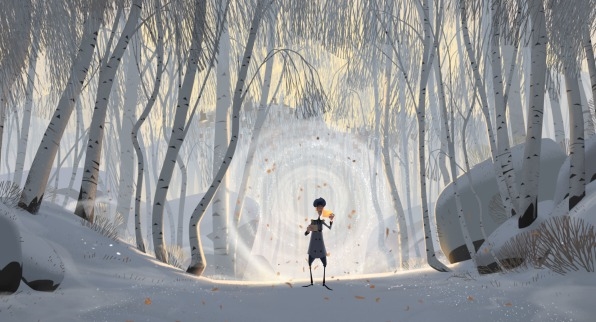
Create content that the whole family can enjoy
If Netflix can entice a kid in Cape Town along with one in Minneapolis to watch Netflix on a Saturday morning, the next question is: How does Netflix inspire those kids’ entire families to sit down and watch something together?
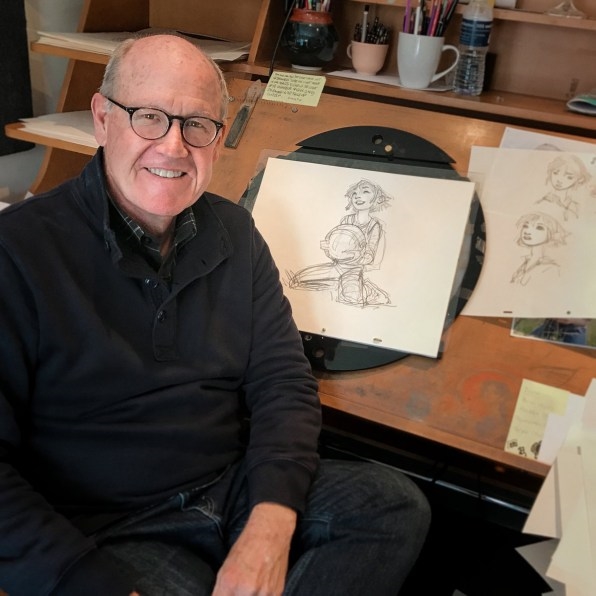
[Photo: courtesy of Netflix]
One answer is by creating longer-form content that aspires to do more than just entertain a child. To that end, a number of kids’ feature films are in production that will start hitting the service later this year. Here, too, Netflix is pushing boundaries and going for a production level that’s on par with the major animation studios. Glen Keane is directing Over the Moon, a CG musical adventure due out in 2020 about a girl who builds a rocket ship to travel to the moon in order to prove to her dad that a legendary Moon Goddess really exists. Sergio Pablos, cocreator of Despicable Me, is currently in Madrid directing a 2D film due this holiday season called Klaus.
Pablos describes his film as “an origin story for Santa Claus,” in which a cranky postman gets sent to a Scandinavian town in the 1800s with the mission of getting the postal service up and running. Only all the locals dislike each other and refuse to write letters, so the postman turns to a toymaker and children to help him with his scheme. “It’s a great, fun story with a strong heart,” says Pablos, whom I spoke with by video conference.
Netflix showed clips from the film at a press event last week, and Baxter, who is overseeing character animation on the film, talked about how Netflix had created special tools for this project that combine traditional and CGI animation. Sitting at a computerized drawing board, he sketched an image of a character in the film. He then showed how software layered in light effects so that the image felt less flat and two-dimensional than hand-drawn animation typically appears.
“The whole intention is to really sort of make hand-drawn animation, to bring it out of that sort of flat character against painted background [look], and make the entire shot look like it was painted with a single brush,” says Baxter, who is as close as Netflix gets to having a creative overlord. (Cobb insists that only filmmakers who want Baxter to be involved in their projects utilize him.)
“We’ll see if it brings your family together,” Cobb says.
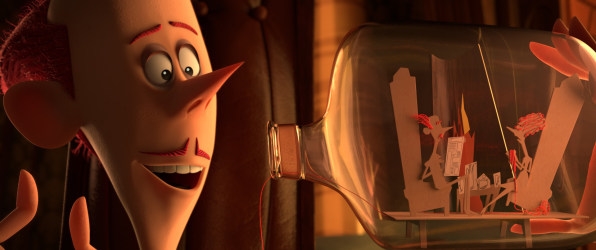
Make the content easily accessible
With a diverse array of kids’ programming, the final challenge is getting kids to know it’s there, and, of course, watch it. Ever since Netflix debuted its kids’ programming in 2011, it has labored to create a kid-friendly user interface, setting up kid-specific profiles and curating content in easy-to-navigate rows based on genre and viewing habits. Most significantly, it created a system whereby kids–some of whom can’t yet read–can scroll through character images of Curious George or Phineas and Ferb or Spider-Man and click into a series or movie.
Netflix being Netflix, that tweaking continues, and the company is currently experimenting with yet another way to get kids interested in a show or movie. Now, beyond just showing younger viewers a character that they recognize or are intrigued by, it wants to go a step further. The company is currently experimenting with a concept that would show not just a character but also a trailer-like video that explains who the character is when a user scrolls over a tile.
“We think we need to help kids understand, who is this character? Are they funny? Are they exciting? And what do they do?” says Cameron Johnson, director of product innovation. “Do they catch the bad guy? Are they a good friend? What are their attributes that provide an emotional connection point for kids?”
Netflix will begin testing the format later this year, though there’s no guarantee that it will roll out. But Johnson says it’s a good indicator of “the direction we’re thinking about.”
“Go back to your five-year-old self and imagine you have a remote control in your hand and you’re browsing through the Netflix experience on your TV, and you’re trying to find something to watch,” he says. “You’re asking yourself, what does Netflix have to offer?”
The answer that Netflix is strenuously working to hear? Everything.
(31)

